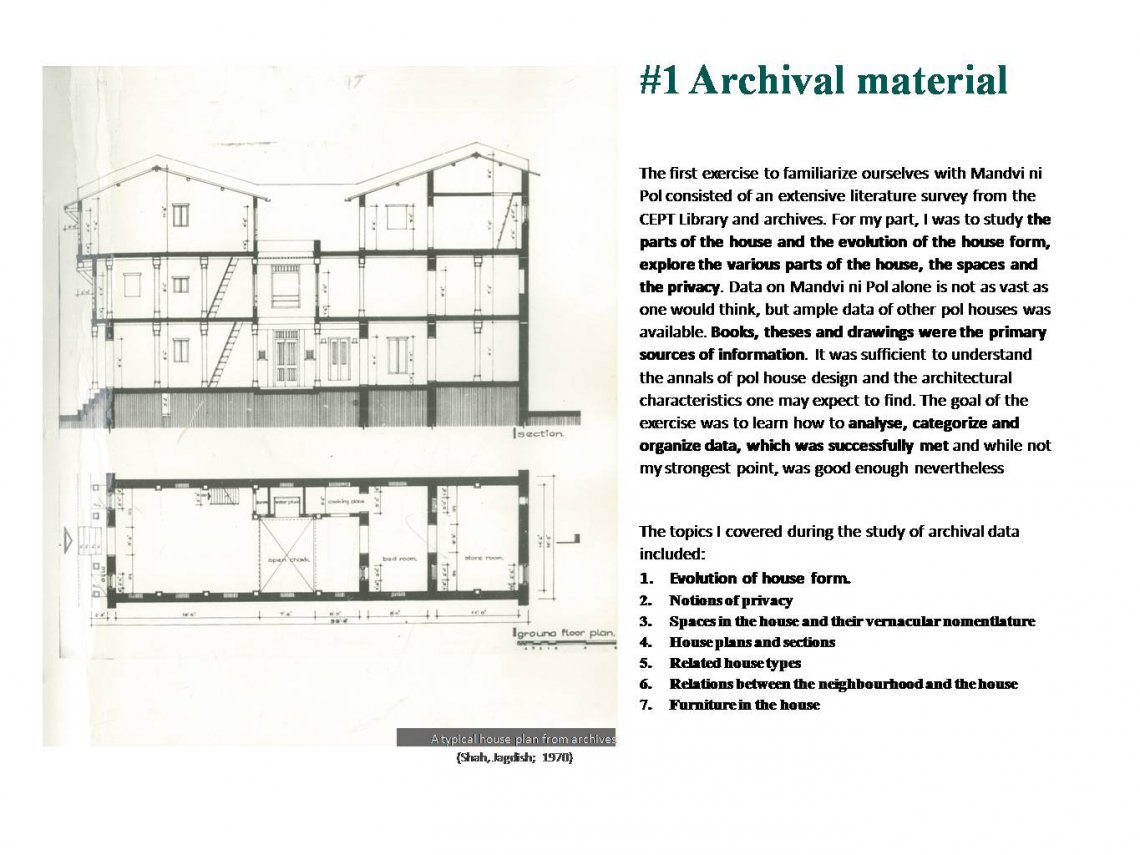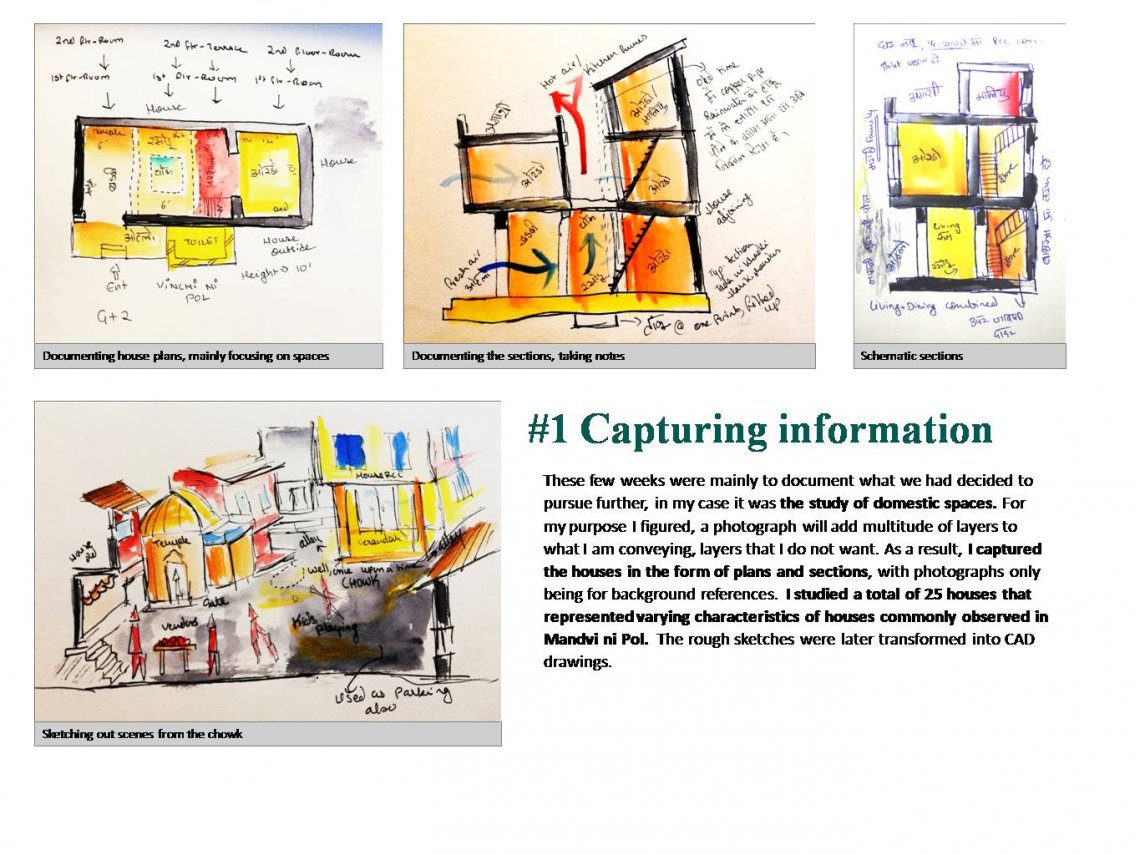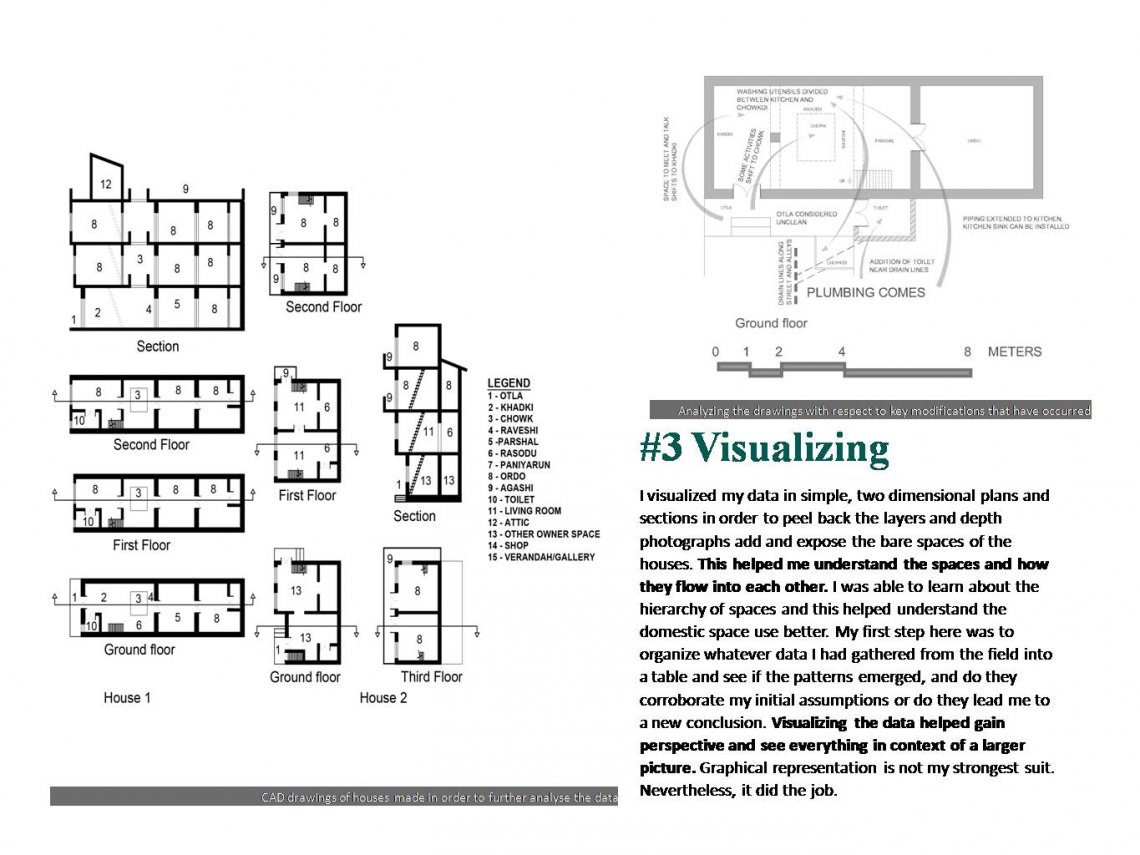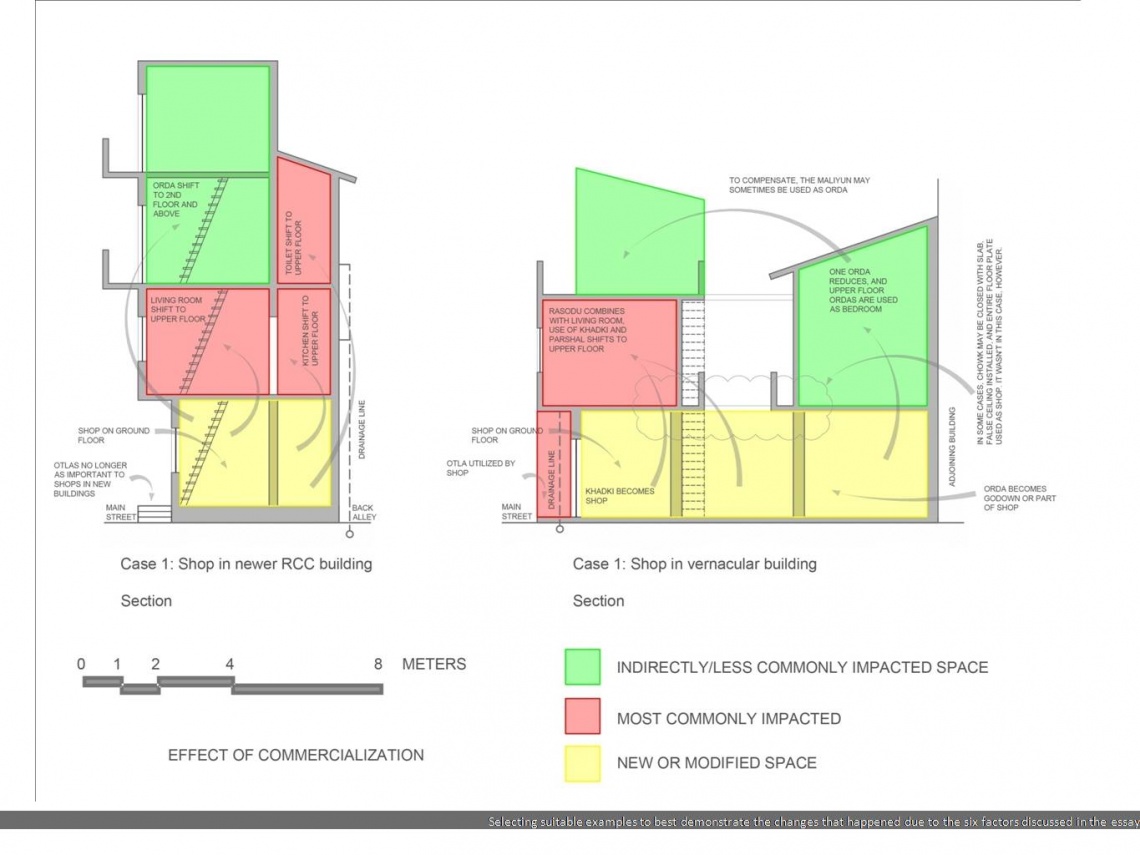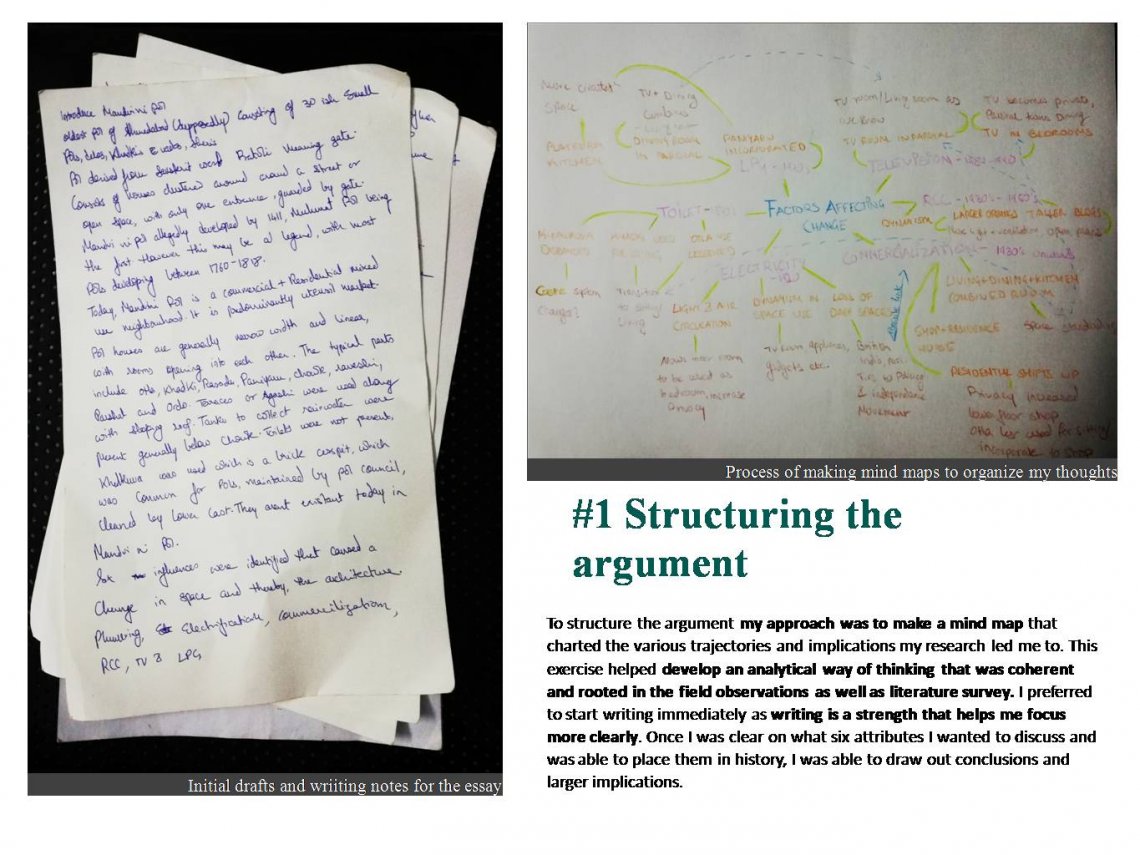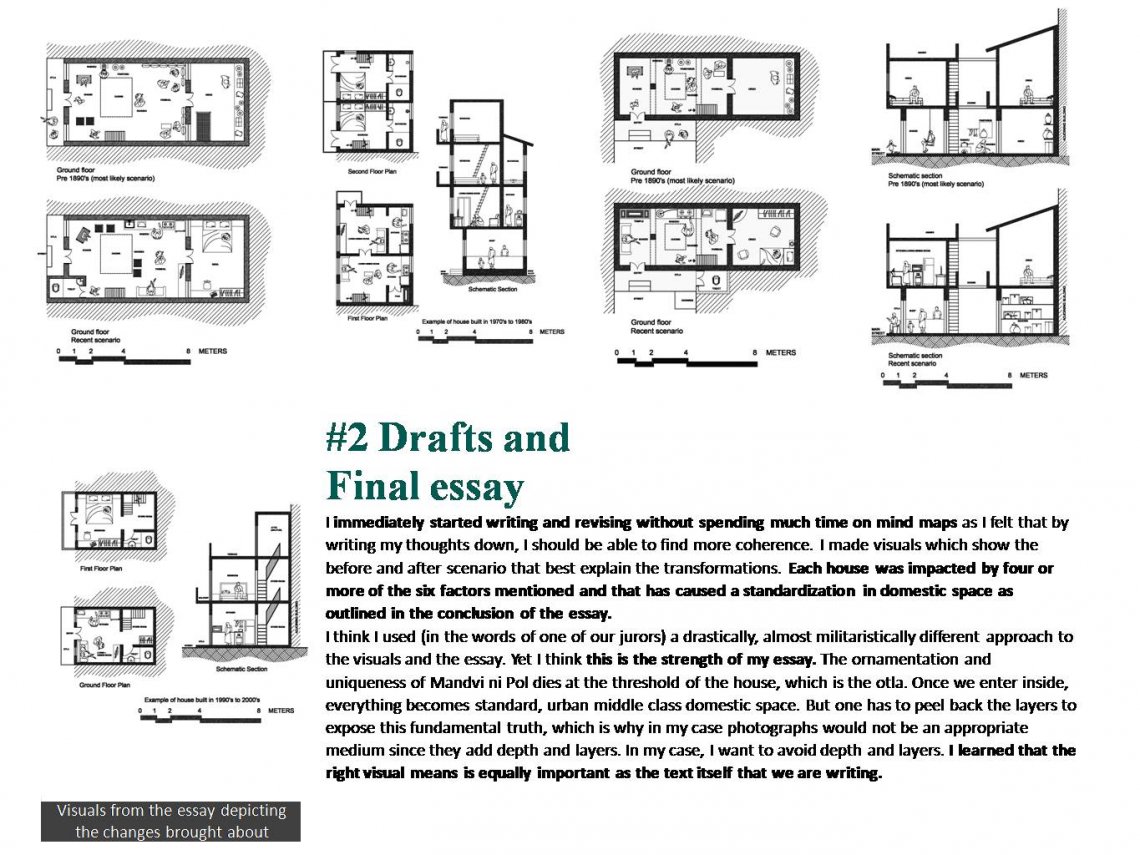Your browser is out-of-date!
For a richer surfing experience on our website, please update your browser. Update my browser now!
For a richer surfing experience on our website, please update your browser. Update my browser now!
My project was a study in the changes in domestic space in the context of the residential fabric of Mandvi ni Pol, Ahmedabad. To conduct the study various houses were studied from the CEPT archives, the CEPT library and on site surveys. The hypothesis is that pressures of modern life (Plumbing, Electricity, RCC, Commercialization, LPG and Television) have forced the houses to conform to a certain standard space use that is observed across urban middle class India.
